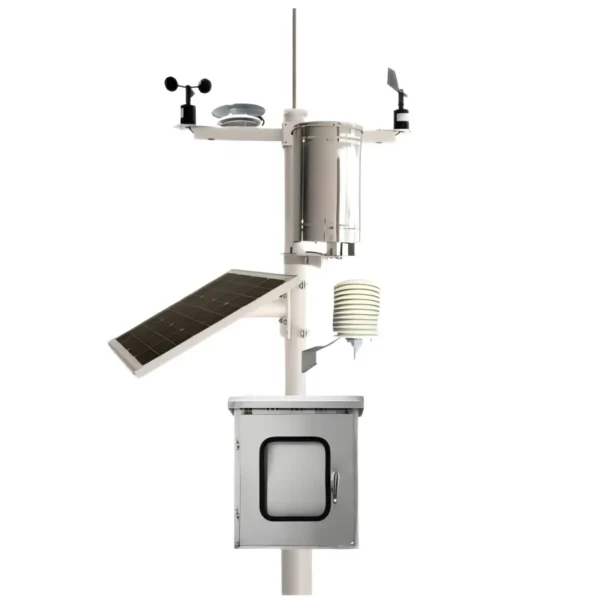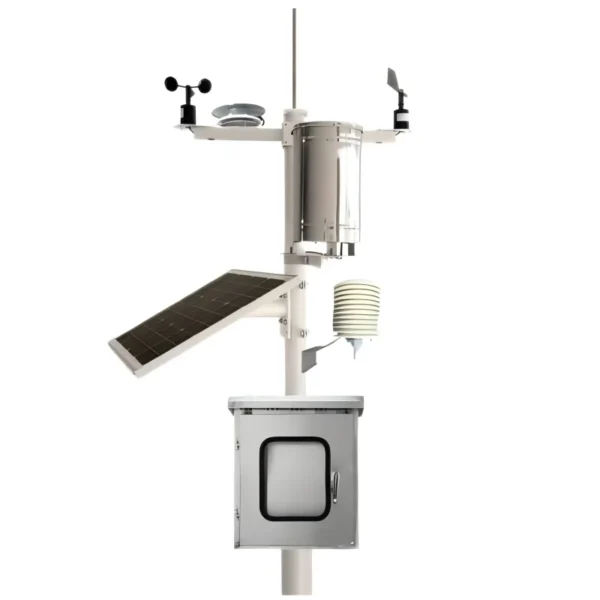
# Automatic Weather Station: Definition and Functionality
## What is an Automatic Weather Station?
An Automatic Weather Station (AWS) is a sophisticated system designed to collect and record meteorological data without the need for constant human intervention. These stations are equipped with various sensors that measure environmental parameters such as temperature, humidity, wind speed, wind direction, rainfall, and atmospheric pressure. The data collected by an AWS is typically transmitted to a central database or displayed on a local interface for real-time monitoring.
## Key Components of an Automatic Weather Station
An AWS consists of several key components that work together to provide accurate and reliable weather data:
– Sensors: These are the primary components that measure different weather parameters. Common sensors include thermometers for temperature, hygrometers for humidity, anemometers for wind speed, wind vanes for wind direction, rain gauges for precipitation, and barometers for atmospheric pressure.
– Data Logger: This device records the data collected by the sensors. It can store data internally or transmit it to a remote location via wired or wireless communication.
– Power Supply: AWS units are often powered by solar panels, batteries, or a combination of both to ensure continuous operation, especially in remote locations.
– Communication System: This system allows the AWS to send data to a central server or other monitoring systems. Common communication methods include GSM, satellite, and radio frequency.
– Mounting Structure: The sensors and other components are mounted on a sturdy structure to ensure stability and accurate measurements. This structure is often designed to withstand harsh weather conditions.
## Functionality of an Automatic Weather Station
The primary function of an AWS is to provide accurate and timely weather data. This data is crucial for various applications, including:
– Weather Forecasting: Meteorologists use data from AWS to predict weather patterns and issue forecasts. Accurate forecasts help in planning agricultural activities, aviation, and disaster management.
– Climate Research: Long-term data collected by AWS is valuable for studying climate change and understanding weather trends over time.
– Agriculture: Farmers rely on AWS data to make informed decisions about planting, irrigation, and harvesting. This helps in optimizing crop yields and managing resources efficiently.
– Aviation: Airports use AWS to monitor weather conditions, ensuring the safety of flights and efficient airport operations.
– Disaster Management: AWS data is critical for early warning systems and disaster preparedness. It helps in predicting severe weather events like hurricanes, floods, and droughts.
## Advantages of Using Automatic Weather Stations
There are several advantages to using AWS over traditional manual weather stations:
– Continuous Monitoring: AWS can operate 24/7, providing real-time data without the need for human intervention.
– Accuracy: Automated systems reduce the risk of human error, ensuring more accurate and reliable data.
– Remote Access: Data from AWS can be accessed remotely, making it easier to monitor weather conditions from anywhere.
– Cost-Effective: Over time, AWS can be more cost-effective than manual stations, as they require less maintenance and labor.
– Scalability: AWS can be easily scaled to cover larger areas or to include additional sensors for more comprehensive data collection.
## Conclusion
Automatic Weather Stations play a vital role in modern meteorology and environmental monitoring. By providing accurate, real-time data, they help in weather forecasting, climate research, agriculture, aviation, and disaster management. The continuous advancements in sensor technology and communication systems are further enhancing the capabilities of AWS, making them indispensable tools for understanding and predicting weather patterns.
Keyword: what is automatic weather station
